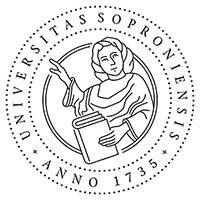The Reconstructed Child
The Psychoanalysis of the Autobiographical Works of Thomas Bernhard
Abstract
This paper reviews the current research on narrative identity. Narrative identity has quickly become accepted as a promising process approach to self-development. This study tries to show contemporary theories on how early mother-child interactions build up the self; and traces the way how early experiences become transformed into narrative self. According to Winnicott there is a true and false self in everybody. Through this false self the infant builds up a false set of relationships. The primary function of the false self is defensive, to protect the true selffrom threat, wounding, or even destruction. This is an unconscious process. The psychoanalysis of Thomas Bernhard’s autobiographical work ’Gathering Evidence’ brings us closer to understand the process which forms the false self. Thomas Bernhard’s life was marked by recurrent misfortunes, including the humiliation of an illegitimate birth and a childhood spent in part with a mother who never disguised her contempt for him. One should not forget that Bernhard attempted a detailed portrayal of his own “biography” in the form of five autobiographical novels, which researchers have always seen as a mixture of poetry and truth.
References
Ábrahám Miklós–Török Mária (1972): Rejtett gyász és titkos szerelem 2. Gyász vagy melankólia: introjekció vs. inkorporáció In: Thalassa 1998/2-3. 131–145.
Allport, G. W. (1961): A személyiség alakulása. Gondolat Kiadó, Budapest.
Bernhard, T. (1982): Önéletrajzi írások. AB OVO Kiadó, Budapest.
Bernhard, T. : Három nap. Átváltozások. Első szám 1993. 11.
Bernhard, T. (1985): Régi Mesterek. Palatinus Kiadó, Budapest.
Bruner, J. (1986): A gondolkodás két formája. In: László János (szerk.): Narratívák 5. Kijárat Kiadó.
Bruner, J.–Lucariello, J.(2001): A világ narratív újrateremtése monológokban. In: László János (szerk.): Narratívák 5. Kijárat Kiadó.
Fleischmann, K. (1986): Az ok én magam vagyok. Interjú Thomas Bernharddal.
Átváltozások. In memorian Thomas Bernhard. Első szám 1993. 15–30.
Fonagy, P. (2004): Winnicott hamis szelf fogalmának újragondolása. In: Péley Bernadette (szerk.): A kapcsolatban bontakozó lélek. ÚMK. 254–272.
Fonagy, P. –Target, M. (2005):Pszichoanalitikus elméletek a fejlődési pszichopatológia tükrében. Gondolat Kiadó, Budapest.
Gergen, K. J.–Gergen, M. M. (1984): A narratívumok és az én mint viszonyrendszer. In: László János (szerk.): Narratívák 5. Kijárat Kiadó. 2001. 77–121.
Hamilton, N. G. (1996): Tárgykapcsolat-elmélet a gyakorlatban. Animula Kiadó, Budapest.
Hámori Eszter–Péley Bernadette (1999): A pszichoanalitikus rekonstrukció problémája. Pszichoterápia VIII. évf. 1999. január. 5–13.
Hofmann, K. (1998): Beszélgetések Thomas Bernharddal. Palatinus Kiadó.
Kundera, M.(2000): A regény művészete. Európa Kiadó.
László János (2004): A második kognitív forradalom: a narratív pszichológia és a kognitív pszichológia viszonya. In: László János–Kállai János–Bereczkei Tamás (szerk.): A reprezentáció szintjei. Gondolat Kiadó. 324–340.
László János (2005): A történetek tudománya. ÚMK.
Lénárd Kata (2004): A nyelvzavar-koncepció hermeneutikai értelmezése. In: Erős Ferenc (szerk.): Az elbeszélés az élmények kulturális és klinikai elemzésében. Pszichológiai Szemle Könyvtár 8. Akadémiai Kiadó. 123–137. doi: https://doi.org/10.1556/mpszle.59.2004.3.8
McAdams, D. P. (2001): A történet jelentése az irodalomban és az életben. In: László János (szerk.): Narratívák 5. Kijárat Kiadó. 157–175.
Miller, A. (1997): A tehetséges gyermek drámája. Osiris Kiadó.
Németh Attila–Moretti Magdolna (szerk.): ”Ki szépen kimondja a rettenetet, azzal föl is oldja”. Medicina Kiadó. 2006
Péley Bernadette (2001): A pszichoanalitikus modell és narratív pszichológia. In: Konfliktus, hiány, trauma. Animula Kiadó. 187–192.
Péley Bernadette (2002): Az elbeszélés szerepe az én (self) kibontakozásában. In: Magyar Tudomány. 2002/1. 71–77.
Péley Bernadette (2004): A korai kapcsolatok és az élettörténeti elbeszélések néhány összefüggése. In: Erős Ferenc (szerk.): Az elbeszélés az élmények kulturális és klinikai elemzésében. Pszichológiai Szemle Könyvtár 8. Akadémiai Kiadó. 137–153. doi: https://doi.org/10.1556/mpszle.59.2004.3.9
Péley, B.–Kis, B.–Naszódi, M.–László, J.: A szelf állapotok kifejeződése az élettörténeti elbeszélésekben. In: Pszichológia. 2005. 25. 2. 171–179.
Propp, V. J. (1999): A mese morfológiája. Osiris Kiadó.
Ricoeur, P. (1980): A narratív azonosság.. In: László János (szerk.): Narratívák 5. Kijárat Kiadó. 15–27.
Snow, C. E. (1990): Building memories: The ontogeny of autobiography. In: Cicchetti-Beeghly (eds.): The self in transition. Infancy to childhood. University of Chicago Press.
Spence, D. P. (2001): Az elbeszélő hagyomány. In: László J. (szerk.): Narratívák 5. Kijárat Kiadó.121–131.
Stern, D. N. (1985): A csecsemő személyközi világa. Animula Kiadó, Budapest.
Stern, D. N. (1995): Az anyaság állapota. Animula Kiadó, Budapest.
Tényi Tamás–Herold Róbert–Lénárd Kata: A találkozás pillanata. In: Pszichoterápia. 2000/április, 117–123.
Trilling, L. (1965): Művészet és neurózis. Európa Kiadó, Budapest.
Downloads
Published
Issue
Section
License
Copyright (c) 2011 Jávorszky Edit

This work is licensed under a Creative Commons Attribution-NonCommercial-NoDerivatives 4.0 International License.








